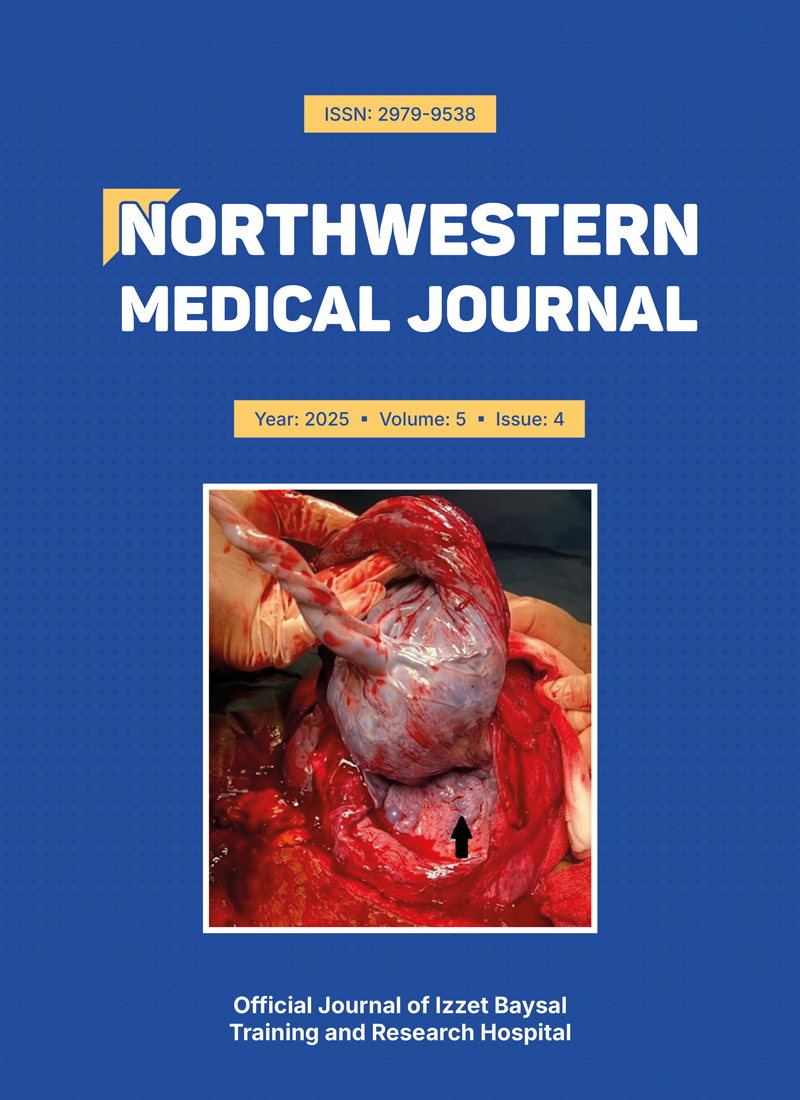Abstract
Aim: We aimed to assess the quality and reliability of YouTube videos on percutaneous ablation of thyroid nodules (PATN) to evaluate their utility as educational tools for patients and healthcare professionals.
Materials and Methods: This cross-sectional study analyzed 76 YouTube videos identified through keyword searches ("percutaneous ablation of thyroid nodules", "thyroid radiofrequency ablation", and "thyroid microwave ablation") on November 10, 2024. Videos were categorized by type (informative, technical, personal experience, and news), duration (≤4 minutes, >4 minutes), upload source (professional healthcare providers, non-professionals, or independent users), and target audience (patients or healthcare professionals).
Quality and reliability were assessed using the Journal of the American Medical Association (JAMA) criteria, the Global Quality Score (GQS), and the modified DISCERN (mDISCERN). Statistical analyses, including the Kruskal-Wallis and Spearman correlation tests, were conducted.
Results: A total of 76 videos were evaluated. Informative videos scored significantly higher on quality metrics (GQS, 2.85 ± 0.15, p= 0.002; mDISCERN, 2.13 ± 0.16, p= 0.008). Videos >4 minutes demonstrated higher quality scores (p= 0.001). No statistically significant differences in popularity metrics (likes, comments, view rates) were observed across groups (p> 0.05). No significant correlations were found between quality scores (JAMA, GQS, mDISCERN) and popularity metrics (R² = -0.019 to 0.147).
Conclusion: While informative and longer videos exhibited higher quality, popularity metrics were not reliable indicators of video quality. These findings highlight the need for healthcare professionals to produce engaging and accurate content for platforms like YouTube to improve public education about PATN.
Keywords: YouTube, percutaneous ablation, thyroid nodule, video quality, patient education
Copyright and license
Copyright © 2025 The Author(s). This is an open-access article published by Bolu İzzet Baysal Training and Research Hospital under the terms of the Creative Commons Attribution License (CC BY) which permits unrestricted use, distribution, and reproduction in any medium or format, provided the original work is properly cited.
How to cite
References
- Che Y, Jin S, Shi C, et al. Treatment of Benign Thyroid Nodules: Comparison of Surgery with Radiofrequency Ablation. AJNR Am J Neuroradiol. 2015; 36(7): 1321-5. https://doi.org/10.3174/ajnr.A4276
- Madathil KC, Rivera-Rodriguez AJ, Greenstein JS, Gramopadhye AK. Healthcare information on YouTube: A systematic review. Health Informatics J. 2015; 21(3): 173-94. https://doi.org/10.1177/1460458213512220
- Syed-Abdul S, Fernandez-Luque L, Jian WS, et al. Misleading health-related information promoted through video-based social media: anorexia on YouTube. J Med Internet Res. 2013; 15(2): e30. https://doi.org/10.2196/jmir.2237
- Reinhardt L, Steeb T, Mifka A, Berking C, Meier F, German Skin Cancer Council. Quality, Understandability and Reliability of YouTube Videos on Skin Cancer Screening. J Cancer Educ. 2023; 38(5): 1667-74. https://doi.org/10.1007/s13187-023-02320-w
- Charnock D, Shepperd S, Needham G, Gann R. DISCERN: an instrument for judging the quality of written consumer health information on treatment choices. J Epidemiol Community Health. 1999; 53(2): 105-11. https://doi.org/10.1136/jech.53.2.105
- Légaré F, Ratté S, Stacey D, et al. Interventions for improving the adoption of shared decision making by healthcare professionals. Cochrane Database Syst Rev. 2010; (5): CD006732. https://doi.org/10.1002/14651858.CD006732.pub2
- Silberg WM, Lundberg GD, Musacchio RA. Assessing, controlling, and assuring the quality of medical information on the Internet: Caveant lector et viewor-Let the reader and viewer beware. JAMA. 1997; 277(15): 1244-5.
- Osman W, Mohamed F, Elhassan M, Shoufan A. Is YouTube a reliable source of health-related information? A systematic review. BMC Med Educ. 2022; 22(1): 382. https://doi.org/10.1186/s12909-022-03446-z
- Drozd B, Couvillon E, Suarez A. Medical YouTube Videos and Methods of Evaluation: Literature Review. JMIR Med Educ. 2018; 4(1): e3. https://doi.org/10.2196/mededu.8527
- Basch CH, Hillyer GC, MacDonald ZL, Reeves R, Basch CE. Characteristics of YouTube™ Videos Related to Mammography. J Cancer Educ. 2015; 30(4): 699-703. https://doi.org/10.1007/s13187-014-0769-9
- Çapar SH, Şenkaya D, Ertürk P, Çetin Kara H. Quality and Reliability of YouTube Videos in the Dix-Hallpike Test. European Archives of Medical Research. 2023; 39(3): 153-8. https://doi.org/10.4274/eamr.galenos.2023.49389
- Kara M, Ozduran E, Mercan Kara M, Hanci V, Erkin Y. Assessing the quality and reliability of YouTube videos as a source of information on inflammatory back pain. PeerJ. 2024; 12: e17215. https://doi.org/10.7717/peerj.17215
- Calisir A, Ece I. Assessment of the Quality and Reliability of Intragastric Balloon Videos on YouTube. Obes Surg. 2022; 32(4): 1157-63. https://doi.org/10.1007/s11695-022-05911-6
- Cesur E, Tuncer K, Sevgi D, Balaban BC, Arslan C. Evaluation of the Quality and Reliability of YouTube™ Videos Created by Orthodontists as an Information Source for Clear Aligners. Turk J Orthod. 2024; 37(1): 44-9. https://doi.org/10.4274/TurkJOrthod.2023.2022.127
- Hakyemez Toptan H, Kizildemir A. Quality and Reliability Analysis of YouTube Videos Related to Neonatal Sepsis. Cureus. 2023; 15(5): e38422. https://doi.org/10.7759/cureus.38422
- Gezer I, Saygili S, Gunver MG, Kasimoglu Y, Tuna-Ince EB. Quality and Reliability of YouTube Video Contents About Sports Mouthguards: A Cross-Sectional Study. Dent Traumatol. 2025; 41(1): 118-27. https://doi.org/10.1111/edt.12989
- Gad B, Shanmugasundaram S, Kumar A, Shukla P. Quality and Reliability of YouTube Videos on Uterine Fibroid Embolization. J Am Coll Radiol. 2022; 19(7): 905-12. https://doi.org/10.1016/j.jacr.2022.03.014
- Cüzdan N, Türk İ. Evaluation of quality and reliability of musculoskeletal ultrasound videos on YouTube. Mod Rheumatol. 2022; 32(5): 999-1005. https://doi.org/10.1093/mr/roab062
- Bora K, Das D, Barman B, Borah P. Are internet videos useful sources of information during global public health emergencies? A case study of YouTube videos during the 2015-16 Zika virus pandemic. Pathog Glob Health. 2018; 112(6): 320-8. https://doi.org/10.1080/20477724.2018.1507784











